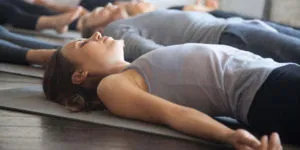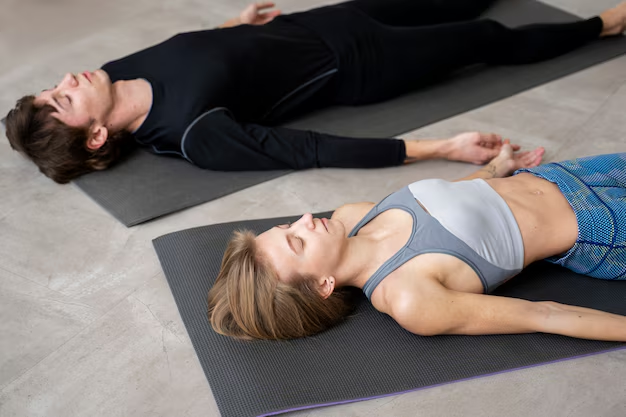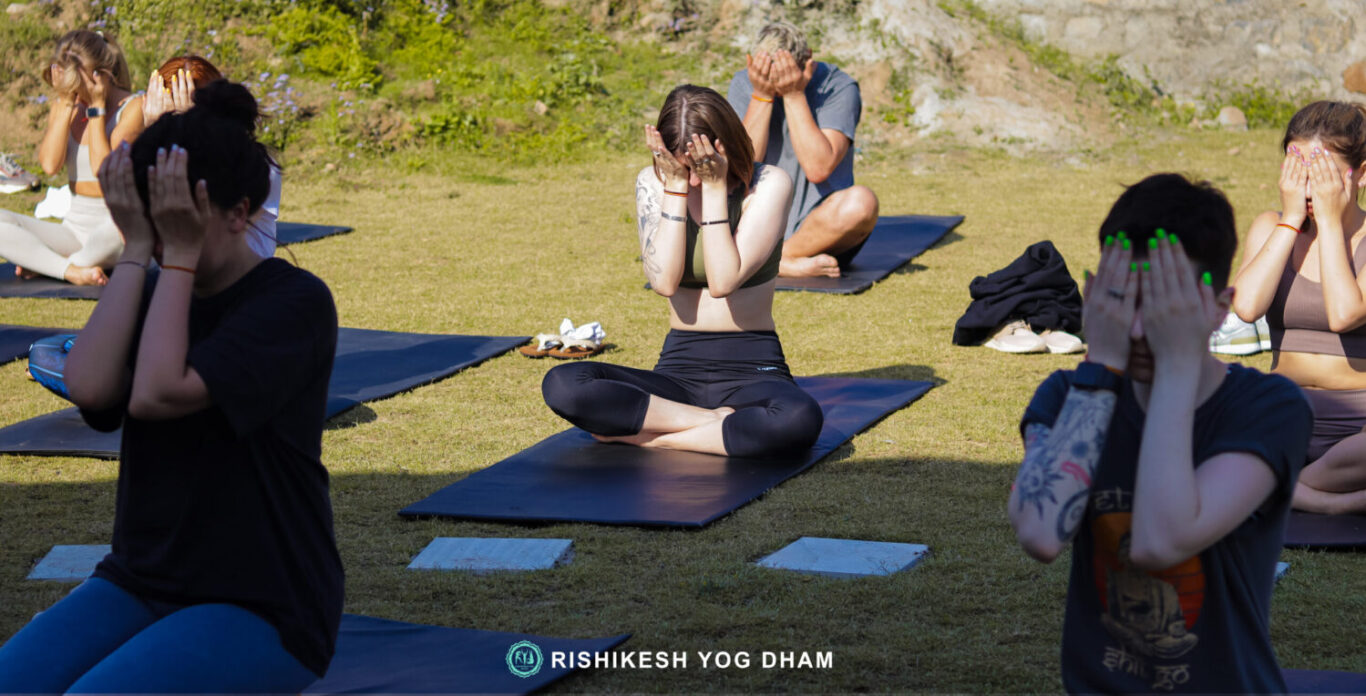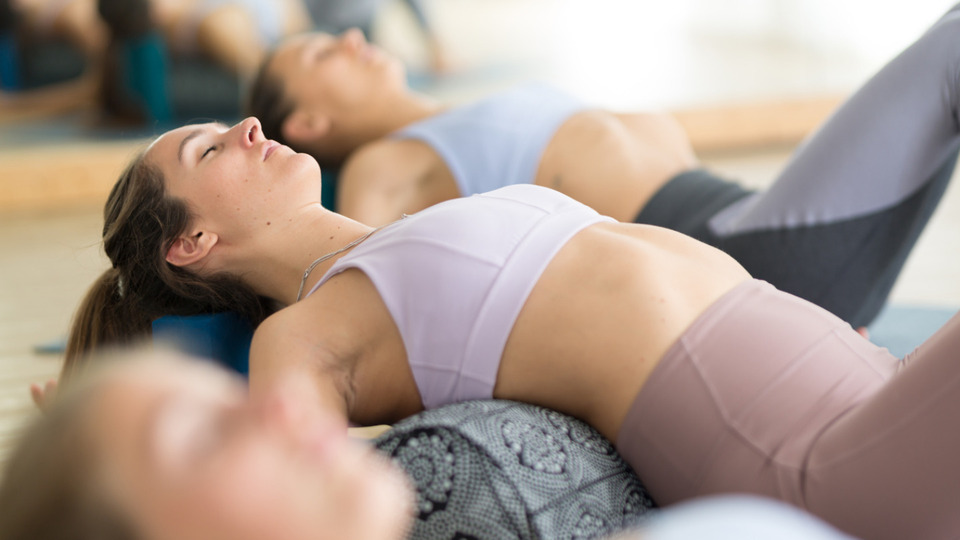Yoga & Autogenic Training
Autogenic training was developed in the 1920s by the physician Prof. JH Schultz. He was a dermatologist, neurologist and psychiatrist. Schultz had experience in suggestion therapy as a hospital doctor during World War I. He developed autogenic training on the basis of hypnosis Relaxation.
He achieved great success with hypnosis, particularly with patients with psychosomatic complaints. However, the success was usually short-lived, as the effect was tied to the practical application of the therapist. His aim was to develop a method that patients could also use at home.
He used elements of Raja Yoga to help him, which attempt to gain control over the mind through mental exercises. He took elements from this practice and combined them with the experience of self-hypnosis, and developed autogenic training from this. This easy-to-use method, which he developed around 1910, was revolutionary in that it gave the patients responsibility for the healing method themselves. It was probably one of the few “self-help aids” of that time that could be given to patients. In addition, in contrast to classic individual treatments, this method was also used in groups.
The suggestion method achieves a state similar to hypnosis and lowers consciousness. Concentration is directed to different parts of the body. The muscles relax, concentration is increased and blood is distributed evenly. Reflex activity is reduced and the breathing rate decreases.
Simple spoken formulas cause a deep Relaxation of the entire organism. The formula, for example, “your arm is getting heavy” leads to a Relaxation of the muscles after appropriate preparation. A physical effect can be achieved by imagining it. The nervous system is influenced.

The possible uses of AT are very varied. All kinds of psychosomatic complaints can improve. It helps with sleep disorders, exam anxiety, headaches, high blood pressure and tension. It is also used to help people quit smoking, as the formulaic intention can bring about a change in behavior and old habits. Concentration on certain parts of the body can also help in the treatment of pain patients. Certain illnesses should not be treated with autogenic training.
These include depression, epilepsy, low blood pressure, schizophrenia and psychosis. For these patients, progressive muscle Relaxation may be more suitable, as it does not involve suggestion. In any case, a doctor should be consulted if in doubt. Autogenic training is tailored to the individual needs of the patient. Most health insurance companies support PRM as part of health prevention.
In practice:
Assume a comfortable position, lying down or sitting. (Comfortable clothing and a blanket will protect you from the cold.)
Say the following formulas slowly in your head:
( e.g. 6×
I am completely calm, I am completely relaxed
My right arm is very heavy
My breathing is completely calm
My heart beats very calmly and regularly
My head is free and clear, my forehead is cool )
Then bring tension back into your body and move.
The entire process takes about 30 minutes
Progressive muscle Relaxation according to Jakobsen (PRM)
Among the most commonly used relaxation techniques, autogenic training and progressive muscle Relaxation are the best known. This technique is particularly widespread in the USA and is even better known than Yoga. The exercises can be carried out almost anywhere without much effort.
Dr. Edmund Jakobsen discovered this technique, which is aimed at relaxing the muscles. The focus of Jakobsen’s research was on the functioning of the muscles and not, as with autogenic training, on suggestion. For many people, this method is therefore more suitable for bringing themselves into a state of Relaxation.
The basis of the research was the fact that muscle tension is directly related to states of inner restlessness, fear and stress. Relaxation of the muscles is also associated with a feeling of mental calm. From a holistic perspective, it is understandable that muscle tension is related to an unbalanced psychological state, as well as physical complaints in the nervous system, organs and digestion.
The technique mainly consists of tensing and then relaxing certain muscle groups. It is also suitable for people who have limited mobility and cannot do any sporting activities. The Relaxation method usually shows results after a short period of use and helps to counteract everyday stress and strains and to improve health. Muscle Relaxation is also used to treat anxiety disorders, sleep disorders, headaches, arterial hypertension and all types of stress symptoms. The activity of the muscles usually also creates a feeling of warmth in the body.
In order to achieve deep relaxation, the practitioner’s concentration is directed to a specific muscle group, which is then tensed for 5-10 seconds. In the relaxation phase that follows, the muscles are loosened. Various muscle groups are included in the tensing and relaxation. The aim of the method is also to experience the physical process of tension as a way to relax. This can help to create a new, more conscious body feeling. Progressive muscle relaxation is used by professional athletes as well as by people who want to protect themselves from the effects of daily stress in everyday life.
Most health insurance companies support PRM as part of health prevention.
In practice:
Find a quiet place where you will not be disturbed.
Lie down or sit on a chair that you can lean on. If it is cold, you should cover yourself.
The spine is straight, the shoulders are relaxed.
Palms facing downwards, feet hip-width apart
Notice tensions and concentrate on them as you breathe in, then release them as you breathe out. Let your breath flow calmly.
Then concentrate on the different parts of your body one after the other:
(right hand, right arm, left hand, left arm, face and head, neck, shoulder, upper body, back, abdomen, pelvis, right leg, right foot, left leg, left foot)
Compare the body parts with each other, feel the difference. Then tense the corresponding body part and hold the tension for about 2 breaths. Then release the tension and feel the difference between the two sides of the body and the relaxation.
Fantasy Journeys
There are speculations that in no other era has there been as much “outward” and as little “inward” travel as in ours. When you watch children listening to the events of a fairy tale, it is clear that they are physically involved in the action. In our culture, this behavior is discarded over time and is usually lost to us as adults. This was not
always the case, however, and can be seen as an adaptation to the modern, western world. In other times, however, fairy tales and stories had a much greater significance and one’s own experiences could be compensated for by “experiencing” them. With this perspective, one can better understand the approach to guided meditations or fantasy journeys.
Trance states are extraordinary experiences. During “journeys inwards” stress is reduced and inner balance can be restored. Very individual issues can also be treated therapeutically. This is different from autogenic training, where relaxation is achieved using consistent formulas. During a fantasy journey, a hypnoid trance state can be reached and in this state, in the therapeutic sense, a “reprogramming” of the subconscious is possible. This obviously has a power component that should not be underestimated. A guided meditation or fantasy journey should therefore take place in a protected environment and there must be a basis of trust.
In practice:
An example: To achieve a state of complete relaxation, the text should be read slowly and, of course, tailored to the needs of the patient.
Lie or sit in a comfortable position and close your eyes.
Balloon ride
I am completely calm and relaxed. My breathing is calm and even. I feel free and clear. I am standing in a meadow and can feel the grass beneath me, moist and soft. The sun is shining and a warm breeze is blowing around my face. I look around and spot a hot air balloon. I get into the balloon. I feel free and clear. I am in control of my own life.
The balloon takes off slowly and safely. I move with the clouds and see small houses and meadows with cows below me. Small birds fly past me. The earth beneath me appears like a toy world. The balloon moves slowly and safely above the clouds. The sun is shining and the air is calm. I feel free and clear. The balloon slowly approaches the ground again. I can see the flowers and trees more clearly again. It lands safely. I get out and feel the safe ground beneath my feet again. I feel free and clear.

Yoga Relaxation
Makarasana
Yoga practice is an alternation of tension and relaxation. There are various asanas (postures) that are particularly suitable for Relaxation. Makarasana means crocodile pose and is primarily used to increase the mobility of the back during relaxation. Depending on which side the legs are moved to, one side of the back is stretched. The exercise is not only for relaxation, but is also beneficial for any type of tense back.
How to practice:
In this asana, you lie on your back with your face relaxed and your lower jaw joint loose. The neck is then slightly stretched by moving your chin towards your breastbone.
Pull your legs up and place your hands on your knees.
Your abdominal muscles are relaxed and your hips remain on the floor.
Your back is slightly stretched.
Your arms are spread out and your face is turned to the left while your knees are dropped to the right.
Your spine is rotated.
Before changing sides, you should feel what changes you notice.
If you cannot reach the floor with your knees, you can put a pillow underneath.
Read More :
Shavasana
This position is often chosen between the individual asanas (postures) in order to feel the effect of the prana flow (energy flow).
You lie on your back with your eyes closed, the palms of your hands facing upwards. The feet are hip-width apart and are allowed to fall outwards under their own weight. The eyes can be closed. The spine is straight and the body is symmetrical. Breathing is calm and natural, deep into the abdomen. By concentrating on a specific part of the body, the energy can be directed with the help of breathing.
Shavasana can also be performed lying on your stomach. The head is then


